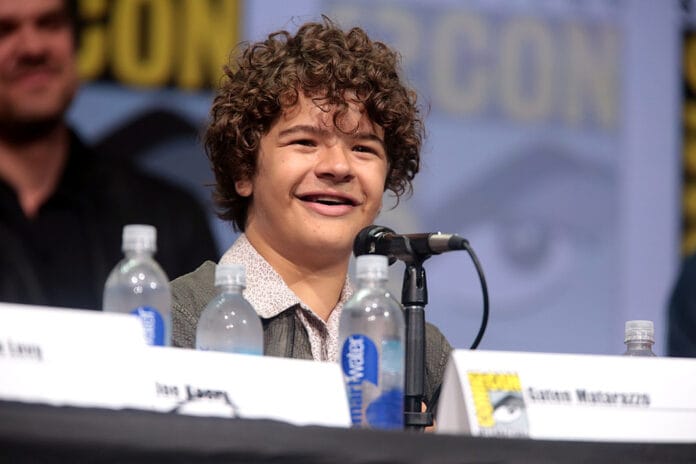My husband and I recently fell victim to binge-watching Stranger Things after the much-hyped season four finale. While I admit I became captivated by the show, I was also derailed by a completely different issue that the producers were quick to mention and incorporate into the storyline in the first season.
Naturally, this particular issue had me pulling out my phone and searching for more information. If you are a fan, you are probably aware of the topic I am referencing. I hate to disappoint you, but while the “Upside Down” world is definitely intriguing, I was more captivated by the disease that the popular character, Dustin, references and actually has in real life in the first episode: cleidocranial dysplasia.
Although a rare occurrence in the dental setting, patients with cleidocranial dysplasia require very active dental management.
What is Cleidocranial Dysplasia?
Cleidocranial dysplasia (CCD) is a rare genetic condition that affects teeth and bones, such as the skull, face, spine, collarbones, and legs.1 It is so rare that only one in one million have it.1 Initially, it was called Marie-Sainton’s syndrome as it was first described by Pierre Marie and Paul Sainton in 1898, who then coined the term for cleidocranial dysplasia.5
Cleidocranial dysplasia comes from “cleido” which means collarbones, and “cranial,” which refers to the skull. This genetic disease is an autosomal dominant genetic trait and can be inherited from either parent or be the result of a new gene mutation.2 It is often diagnosed between birth and four weeks of age.3 Cleidocranial dysplasia is diagnosed by a clinical examination and radiographs, as well as genetic testing for mutations in the RUNX2 gene. This gene instructs your body to make a protein that helps develop and maintain your teeth, bones, and cartilage.7
Signs of Symptoms
Those affected by CCD exhibit a broad range of signs and symptoms that vary considerably from one person to another. Signs include underdeveloped or absent clavicles (collarbones), delayed closure of the fontanels (skull bones), decreased bone density (osteopenia), reoccurring sinus and ear infections, bone abnormalities of the hands, short stature, and dental abnormalities.
Dental abnormalities are some of the most significant complications of CCD, with hyperdontia being the most major dental feature and can affect both primary and permanent dentition.3 Other dental abnormalities include high-vaulted palate, underdeveloped maxilla, mandibular prognathism, supernumerary teeth, delayed eruption of the teeth, crown or root abnormalities, absence of teeth, underdeveloped enamel, cleft palate, and dentigerous cysts.
Dental Management
The dental management of those affected with cleidocranial dysplasia is imperative and is essential to a timely diagnosis. Successful results are imperative to collaboration among pedodontists, orthodontists, prosthodontists, and oral surgeons. Various dental treatment methods are available beginning as early as five years of age.
Removing the supernumerary and impacted teeth are some of the first steps taken with orthodontics in place to facilitate orthodontic traction. Prosthetic treatment can be utilized to replace teeth either temporarily or permanently, with implants being more suitable for older patients. Prostheses also help with esthetics which can help improve self-confidence.
Patients with cleidocranial dysplasia can achieve a nearly complete dentition with the help of surgical-orthodontic treatment. However, the process is spread over a period of years and can require multiple surgeries.6
How the Dental Professional Can Help
While this condition is not something dental professionals will often see, if at all, during our careers, it is important to be familiar and armed with the knowledge necessary to help guide and educate patients. It is not too far off base to suggest that, with routine radiographs, especially panoramic radiographs, dental professionals can be of assistance to help lead to a diagnosis by referring patients with signs and symptoms to their medical doctor for testing.
As always, it is important to encourage good oral hygiene (brushing and interdental cleaning) to keep an already complicated situation from getting worse. Dental professionals can also aid in providing moral support during treatment.
A big kudos to the producers of Stranger Things for showcasing this disease by incorporating it into the storyline. By doing so, they have not only supported their actor but have helped educate their viewers, including me and other dental professionals.
Before you leave, check out the Today’s RDH self-study CE courses. All courses are peer-reviewed and non-sponsored to focus solely on high-quality education. Click here now.
Listen to the Today’s RDH Dental Hygiene Podcast Below:
References
- Ickow, I.M. Cleidocranial Dysplasia (CCD). (n.d.). Johns Hopkins Medicine. https://www.hopkinsmedicine.org/health/conditions-and-diseases/cleidocranial-dysplasia-ccd
- Cleidocranial Dysplasia. (n.d.). National Organization for Rare Disorders. https://rarediseases.org/rare-diseases/cleidocranial-dysplasia
- Cleidocranial Dysostosis. (n.d.). UCSF Benioff Children’s Hospital. https://www.ucsfbenioffchildrens.org/conditions/cleidocranial-dysostosis
- Roberts, T., Stephen, L., Beighton, P. Cleidocranial dysplasia: a review of the dental, historical, and practical implications with an overview of the South African experience. Oral Medicine. 2013; 115(1): 46-55. https://doi.org/10.1016/j.oooo.2012.07.435
- Bharti, K., Goswami, M. Cleidocranial dysplasia: A report of two cases with brief review. Intractable & Rare Diseases Research. 2016; 5(2): 117-120. https://www.ncbi.nlm.nih.gov/pmc/articles/PMC4869578/
- Zhu, Y., Zou, Y., Yu, Q. et al. Combined surgical-orthodontic treatment of patients with cleidocranial dysplasia: case report and review of the literature. Orphanet J Rare Dis. 2018; 13(217). https://doi.org/10.1186/s13023-018-0959-3
- RUNX2 Gene. (2017, August 1). Medline Plus. https://medlineplus.gov/genetics/gene/runx2/#












